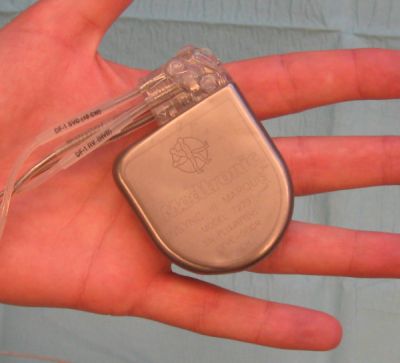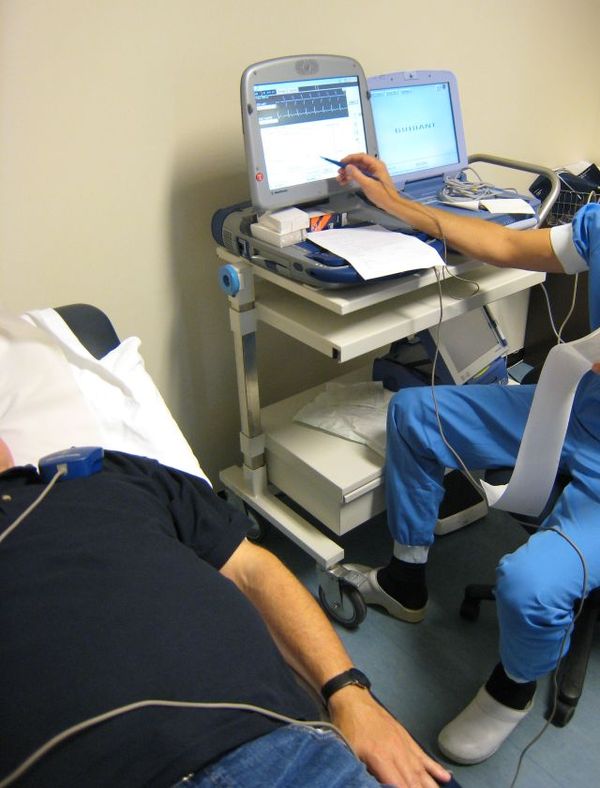ICD



ICD (Implantable Cardioverter Defibrillator ): this device can detect and treat Ventricular Tachycardia and Ventricular Fibrillation. Usually the first treatment is anti-tachy pacing (pacing at a rate +- 10% above the ventricular rate in ventricular tachycardia, which can convert the rhythm to sinus rhythm). If this is not effective an defibrillator shock is delivered, usually with 16-36 Joules of energy. ICDs can save lives in patients who have a high risk of ventricular arrhythmias. All ICDs have optional pacemaker activity to treat bradycardias. New biventricular ICDs have 3 leads: an atrial lead, a left ventricular lead and a right ventricular lead.
A short history of ICD therapy
- 1899, first documented defibrillation of a dog with ventricular fibrillation (VF) in dogs.Prevost
1 Three decades later, pioneering work in the field of defibrillation concluded that the passage of electrical current across the heart can both initiate and terminate VF.2,3 Still, little attention was paid to this phenomenon, as evidenced by Paul Dudley White’s Heart Disease, which devoted less than half a page to VF and characterized the arrhythmia as "a condition of little importance so far as we know now."4 In 1947, the thoracic surgeon Claude Beck saved the first human life by the successful use of cardiac defibrillation in a 14-year-old boy who developed VF during a thoracic surgical procedure and went on to achieve a full recovery.5 These early accomplishments provided the foundation for the landmark work of Mirowski and Mower that ultimately led to the development of the implantable cardioverter-defibrillator (ICD) and its introduction in humans in 1980.6
References
<biblio>
- Prevost Prevost J, Batelli F. La mort par les courants electriques: courant alternative a bas voltage. J Physiol Path Gen. 1899; 1: 399–412.
</biblio>